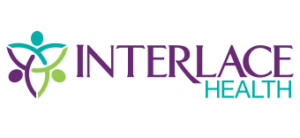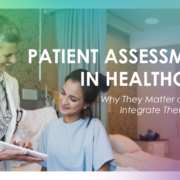Patient Assessments in Healthcare: Why They Matter and How to Integrate Them into EHRs

Patient assessments are a vital part of providing quality healthcare to patients. They are the process of gathering, sorting, and analyzing a patient’s health information using evidence-informed tools to learn more about their overall health, symptoms, and concerns.
Patient assessments can help healthcare providers and related organizations to:
- Determine the most appropriate healthcare for their patients.
- Identify groups of patients at risk for harmful exposures or health problems.
- Recognize patients who benefit from specific interventions to reduce the risk of injury or illness or improve health.
- Identify opportunities for illness and injury prevention and health promotion.
Patient assessments can vary in length and range and may be asked of patients of all ages. Some may be completed during an office visit or between office visits, on paper or a computer. They can include questions about a patient’s medical history, diagnoses, medications, treatment plans, immunization dates, allergies, radiology images, laboratory and test results, and more.
Assessments are being used in various types of health systems for different patient population groups.
- The University of Michigan Health System implemented a patient assessment tool to identify patients at risk of developing pressure ulcers. The tool helps healthcare providers identify patients who need additional support and interventions to prevent pressure ulcers. As a result, the health system saw a significant reduction in the number of pressure ulcers among patients.
- The Veterans Health Administration implemented a patient assessment tool to identify patients at risk of developing chronic obstructive pulmonary disease (COPD). The tool assists healthcare providers in identifying patients who need additional support and interventions to manage their COPD. As a result, the health system saw a significant reduction in hospitalizations and emergency department visits among patients with COPD2.
- The University of California, San Francisco Medical Center implemented a patient assessment tool to identify patients at risk of developing delirium. The tool helps healthcare providers identify patients who need additional support and interventions to prevent delirium. As a result, the health system saw a significant reduction in the incidence of delirium among patients3.
A More Efficient Approach to Pediatric Assessments
While many organizations use an electronic signature process at registration, clinical assessments are typically approached with pen and paper. After obtaining a CD with 450 English and Spanish pediatric assessment forms, Skagit Regional Health quickly realized they needed a practical way to distribute them. Requiring a more efficient and effective approach, Skagit modernized its approach to pediatric assessments.
Instead of printing the form and hoping it would eventually find its way into the EHR, the original was scanned and saved as a TIFF. Next, it was imported into Interlace Health Form Designer as a page-size image and published. With minimal effort, the header and barcodes were assigned, resulting in identifying features for scanning.
With a few simple clicks, clinicians print the forms on demand as needed with Interlace Health. Additionally, all the necessary identifying information for batch scanning into the EHR is automatically populated on each form, minimizing human error. The electronic workflow allows for a centralized approach to document management while standardizing the forms and allowing for greater ease in version control.
Using the Interlace Health tools to build or manage assessments is incredibly advantageous from both a time and financial perspective.
If we had tried to build these inside of our Epic EHR, the time and cost would have been incredibly higher than the work we did with Interlace Health,” shared Alan Duke, Document Management Administrator from Skagit Regional Health.
Given the value to patient care by capturing information through assessments, digitizing the process to eliminate errors, standardizing workflows, and ensuring proper indexing into the EHR is vital. Working with Interlace Health, you can create new assessments or convert existing paper assessments into EHR-compatible tools.
For more information on how to create assessments or other form-based workflows at your health system, contact us.
About the Author:

Patricia Clarkson is the Director of Customer Success Management at Interlace Health. With over 20 years of technology experience as a customer advocate, she has a propensity for building long-term relationships. Her team regularly interacts with customers, guiding adoption and expansion while expediting their time-to-value. Patricia delights in increasing her customers’ success and thrives on helping them achieve their desired results with their Interlace Health solutions. With a 97.4% customer retention rate, there are loads of successful customers to celebrate! Connect with Patricia on LinkedIn.
Download eBook: How Healthcare Teams Can Leverage Digitized Forms










 Dessiree Paoli is the Director of Product Marketing & Strategy at
Dessiree Paoli is the Director of Product Marketing & Strategy at 










